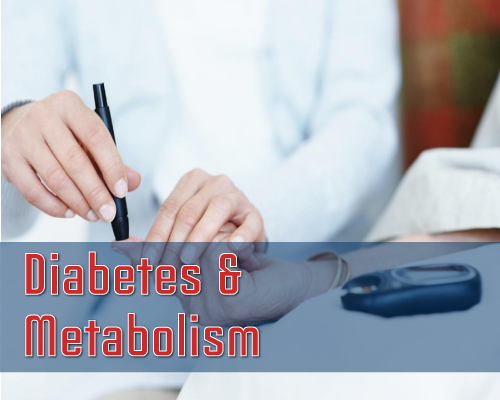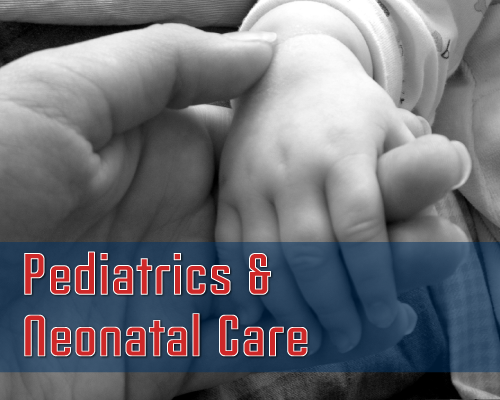Review Article
Improving Leisure Constraints in Older Adults with a Fear of Falling through Hatha Yoga: an Acceptability and Feasibility Study
Marieke Van Puymbroeck1*, Arlene Schmid2, Alysha Walter2 and Brent Hawkins2
1Department of Parks, Recreation and Tourism Management, Clemson University, 282B Lehotsky Hall, Clemson,SC 29634-0735, USA
2Department of Occupational Therapy, Colorado State University, Fort Collins, CO 80523, USA
*Address for Correspondence: Van Puymbroeck M, Department of Occupational Therapy, Colorado State University, Fort Collins, CO 80523, USA, Tel: +970 491-7562; E-Mail: [email protected]
Dates: 21 June 2017; Approved: 26 July 2017; Published: 01 August 2017
Citation this article: Van Puymbroeck M, Schmid AA, Walter A, Hawkins B. Improving Leisure Constraints in Older Adults with a Fear of Falling through Hatha Yoga: an Acceptability and Feasibility Study. Int J Gerontol Geriatr Res. 2017;1(1): 007-013.
Copyright: © 2017 Van Puymbroeck M, et al. This is an open access article distributed under the Creative Commons Attribution License, which permits unrestricted use, distribution, and reproduction in any medium, provided the original work is properly cited.
Keywords: Yoga; Recreational therapy; Fear of falling; Falls; Older adults; Rehabilitation; Treatment interventions
Abstract
Falls are the leading cause of fatal and nonfatal injuries in the older adult population. After a fall, many individuals become fearful that they will fall, and reduce their participation in activities. This reduction in activities, called constraints, cascades into poorer physical, emotional, and cognitive health. In this study, older adults participated in a Hatha yoga intervention led by a yoga therapist, which was designed to determine if this was feasible and acceptable in older adults, and to determine if yoga helped to reduce leisure constraints. Leisure constraints were reduced over the 12-week period, and more dramatically for individuals who had fallen in the past six-months, compared to those who had not fallen in the past six-months. The data reported here also support that the intervention was feasible and acceptable. Implications for future research and practice are included.
Introduction
One in four older adults fall each year [1] and every year, over 2.8 million older adults are treated in an emergency room for injuries resulting from a fall [2]. The leading cause of fatal and non-fatal injuries in older adults is falls [3], and approximately 20% of individuals who fall experience moderate to severe injuries, which may lead to decreased independence [4]. Costs from falls are exorbitant, as inflation-adjusted costs of falls in 2010 was approximately $31 billion [5]. An additional personal cost of sustaining a fall is increased risk of fear of falling [6].
Fear of Falling (FoF) has been defined as a “disabling symptom of impaired mobility among frail older people that is significantly associated with depression, diminished performance in gait, and restricted instrumental activities of daily living” [7]. FoF is one of the most prevalent fears experienced by older adults [8] in fact; researchers have found FoF in 29%-92% of older adults recently sustaining a fall and in 12%-65% of older adults without a recent fall [9-11]. Delbaere, [6] discussed the ‘vicious cycle’ of fear of falling, i.e. those who demonstrate FoF are likely to exhibit decreased engagement in their environment, leading to further decreases in strength and balance, thus placing the individual at greater risk for falls and further development of FoF.
FoF likely constrains individuals from full and active participation in life activities, including leisure activities [12]. Importantly, older adults who experience reduced participation in life activities tend to experience worse mental health and cognition [13,14]. Leisure constraints in the older adult population may lead to isolation and a myriad of health related conditions. For example, some previously identified health conditions which increase leisure constraints for older adults include bending, balance, walking, visual and auditory problems, and general health limitations, [15,16] the primary response to these constraints was activity cessation. Involvement in leisure activities supports the components of successful aging, with reduced risk of disease, high mental and physical functioning, and active engagement with life [16].
Jackson, [17] suggested that leisure constraints are divided into three types: intrapersonal, interpersonal, and structural. Intrapersonal constraints are psychological conditions internal to the individual, such as personality, mood, and attitudes. Interpersonal constraints occur due to some aspects of an individual’s interaction with others. Structural constraints are considered external to the individual and are often related to the environment that the individual exists within, including costs and lack of opportunities. Crawford and Godbey, [18] hypothesized that intrapersonal constraints are related to motivations, and thus may pose the strongest barriers to participation in leisure activities. FoF would be considered an intrapersonal constraint since fear is a powerful psychological condition that shapes (or limits) behavior. We posit that FoF may also increase leisure constraints in this population. A potential way to address both FoF and leisure constraints is through the use of Hatha yoga [19-21].
Hatha yoga is an ancient Indian practice that has been demonstrated to enhance the physical, mental, intellectual and spiritual well-being of those who adopt it as part of their physical activity. Hatha yoga uses a combination of asanas (postures) and pranaymas (breathing), and meditation (dhyana) to improve both physiological and psychological well-being. In fact, a national survey in the United States reported that yoga participants experienced better health and felt that yoga minimized symptoms in health conditions [22]. There is limited work that demonstrates that yoga may be an effective modality to manage FoF [20], but the evidence regarding the ability of yoga to improve other fall risk factors is fairly strong. For example, yoga has been shown to improve: balance; muscle strength; endurance; flexibility; mobility; physical self-awareness; well-being; and the ability to stand quicker, move faster, and reach longer [23-26]. Yoga has been shown to be feasible with older adults in residential care as a potential intervention to improve balance [27] and with older adults living in rural [28] and urban areas [29] Our work has demonstrated improvements in balance and FoF among stroke survivors following a yoga intervention [23], while a recent Cochrane review reported that FoF may be reduced immediately following an exercise intervention, it may be difficult to prolong these effects [30].
In sum, falling and FoF in older adults are serious public health concerns as research has demonstrated that as individuals become increasingly fearful of falling, they engage in fewer activities, and likely have higher constraints to leisure participation. However, these connections have not been explored in the extant rehabilitation and yoga therapy literature. Therefore, our objectives were to determine if a 12-week yoga program, designed to reduce falls and improve FoF for older adults, was acceptable and feasible in this population, and if there would be subsequent changes in perceived leisure constraints.
Methods
Design
This is a secondary data analysis of data derived from a yoga study focused on improving fear of falling in older adults [31].
Participants
The study was conducted at a residential retirement community in a university town in the central United States. The recruitment process began with placing invitation letters and study information in each individual resident’s mailbox, and the principal investigator held an informational session to discuss the study and what the expectations would be for those who signed up for the study. The project coordinator or the principal investigator screened all interested residents for eligibility. The IRB was approved by the Institutional Review Board, and all participants signed an informed consent prior.
To be eligible participants had to be at least 60 years old, willing and able to commit to a twice weekly, 12-week Hatha yoga program, and endorsed a fear of falling in the past 12 months (answering “yes” to the question “in general, are you afraid you might fall?” with qualifiers of “at home,” “in bad weather,” “in good weather,” or “in a crowd”). This modified single question has been found to demonstrate high concurrent validity and test-retest reliability with other measures of FoF [20]. Potential subjects were excluded if they met one of the following conditions: (a) exercised more than five times per week; (b) possesses any clinical condition that contraindicates physical activity on the Physical Activity Readiness Questionnaire [32,33] (PAR-Q); and (c) currently enrolled in other clinical trials related to balance or exercise. Fifteen older adults (mean age = 78) met the eligibility criteria and signed informed consent forms prior to testing and involvement in the study. The study was approved by the local institutional review board.
Description of the intervention
A certified yoga therapist offered Hatha yoga twice per week for 75 minutes per session for 12 weeks in a multipurpose room at the retirement center. The yoga sessions consisted of a variety of breathing exercises and seated, standing, and floor-based postures, which were modified based on the individual needs of all subjects, including substitution of a posture if contraindications existed. The postures became progressively challenging as the intervention advanced. The sessions were developed to specifically improve confidence related to falls and movement. See table 2 for the progressive postures provided during the 12-week intervention. At the end of the program, participants received a yoga mat, a yoga strap, and a one-to-one consultation with the research team about their results as an incentive if they completed both the pre-and post-tests and attended at least 80% of the yoga sessions.
| Table 2: Asana and Pranayama sequence used in the 12-week Hatha yoga and fear of falling intervention | |
| Session # | Asana and Pranayama sequence |
Seated postures:
|
|
Week 1 sequence, plus:
|
|
| Week 2 sequence, plus: Standing postures
|
|
Week 2 sequence, plus:
|
|
| Week 2 sequence, plus: Seated & standing postures
|
|
| Week 2 sequence, plus: Increased focus on breathing and relaxation throughout class Standing &seated
|
|
| Week 2 sequence, plus: Seated &standing
|
|
| Week 2 sequence, plus: Breathing
|
|
Week 2 sequence, plus:
|
|
| Week 2 sequence, plus: Breathing
|
|
| Week 2 sequence, plus: Standing
|
|
| Week 2 sequence, plus: Standing
|
|
Week 2 sequence, plus:
|
|
| Week 2 sequence, plus: Standing postures with and without block
|
|
| Week 2 sequence, plus: Standing postures
|
|
| Week 2 sequence, plus: Breathing
|
|
| Week 2 sequence, plus: Breathing
|
|
| Week 2 sequence, plus: Seated
|
|
| Week 2 sequence, plus: Standing
|
|
| Week 2 sequence, plus: Seated
|
|
| Week 2 sequence, plus: Standing
|
|
| Week 2 sequence, plus: Breathing
|
|
| Week 2 sequence, plus: Breathing
|
|
| Review of all poses with a faster pace Demonstrations of using the block at the wall for wall pushups Question and answer session |
|
Data Collection
Demographic information for each participant (e.g., age, race, gender, education level, marital status, self-rated health, ambulation with assistive device) was collected at baseline before beginning assessments or the intervention. In addition, participants were measured for their number of falls since the previous measurement, and leisure constraints at baseline and at the end of the intervention. Other variables, such as balance and flexibility, were recorded and are described elsewhere [20].
Number of falls: At baseline, participants were asked how many times they had fallen in the past six months. At the 12-week measurement, participants were asked how many times they had fallen since the previous measurement.
Leisure constraints: Constraints were measured using a scale developed from a synthesis of previously used constraints scales. The scale seeks to identify constraints related to a desired physical activity. The constraint scale has demonstrated strong reliability and validity [34].
Acceptability and feasibility: Acceptability and feasibility were explored by examining attendance, attrition, and written responses to open-ended questions on the 12-week questionnaire. Data from the yoga instructor about specific modifications were also obtained in written form and are included in the results.
Data analysis: Data were assessed for normality. Paired sample t-tests (were computed to compare the mean scores on the aggregate 20-item Leisure Constraints Scale (using the scale modified by Shinew et al., [35] and the individual leisure constraint items [34].
The dichotomous variable ‘falls in the six months prior to the start of the study’ (yes or no) was used to divide the sample into two groups to further explore if leisure constraints changes were greater in one group. To do this, we used a related samples Wilcoxon Signed Rank test to assess differences in the leisure constraint score between people who had and had not fallen in the six months prior to the start of the study.
Attendance, attrition, and the written responses to the open-ended questions were typed into a word processing document. All data were reviewed and analyzed to provide a clearer picture of the acceptability and feasibility of the intervention. A thematic content analysis was conducted.
Results and Discussion
Of the 15 individuals enrolled in the study, 14 completed the study; one individual withdrew from the study due to a new cancer diagnosis (93% completion). All 14 reported their race as white. The majority of the participants were female (78.6%), had some college education or higher (92.9%), and rated their health as good or very good (71.4%). About half of the participants (57%) were married, while the other half was widowed. The mean age was 78 years, ranging from 63 to 90. Demographics of the study participants are detailed in table 1.
| Table 1: Demographics (N = 14) | |
| Variable | Mean ± SD or n (%) |
| Age | 78.36 ± 8.75 range 63-90 |
| Race White |
14(100%) |
| Gender Male Female |
3(21.4%) 11(78.6%) |
| Education level High school Some college Bachelor’s degree Graduate school |
1(7.1%) 4(28.6%) 5(35.7%) 4(28.6%) |
| Marital status Married Widowed |
8(57.1%) 6(42.9%) |
| Self-rated health Excellent Very good Good Poor |
2(14.3%) 5(35.7%) 5(35.7%) 2(14.3%) |
| Fall within past year | 5(35.7%) |
| Use of assistive device for ambulation | 2(14.3%) |
Improvements in leisure constraints
There was a significant improvement in the aggregate score on the leisure constraints scale between baseline and 12 weeks (t = -2.072, p = .05), indicating a reduction in leisure constraints. Specific leisure constraints that demonstrated a statistically significant improvement (reduction in score) during the twelve-week period were: “I’m afraid of unattended dogs” (t = -2.673, p =.019); “I’m too self-conscious about the way I look” ( t = -2.121, p = .047); “I’m not skilled enough” (t = -2.188, p = .047); and “I participated in the past and I didn’t like it” (t = -2.233, p = .04).
The Wilcoxon signed rank test, a post-hoc analysis that looked at differences in perceptions of leisure constraints, determined that people who had fallen in the previous 6 months had a statistically significant improvement in leisure constraints (p = .008), while those who had not fallen in the 6 months prior to the study did not have a statistically significant improvement in leisure constraints (p = .225).
Acceptability
In terms of acceptability, participants unanimously reported enjoying the yoga intervention. Comments included: “It was amazing how much utility was gained from such a gentle program- never felt super rigorous;” “The breathing and exercises were pleasant and not difficult, yet I felt ‘exercised’ after.” While the majority of the comments were related to enjoyment; there was also a focus on the breath work as a primary benefit. Furthermore, other subjects described feeling more aware of their bodies, and how this increased awareness made many aspects of life easier, including walking, resting, and sleeping. The yoga instructor used specific techniques to adapt the yoga postures to be completed primarily in a chair or standing. The participants all reported concern at the beginning of the intervention when it was mentioned that some postures would be done on the floor, but after sequencing the intervention to progressively include floor postures, the participants indicated feeling more confident about their ability to get off the floor should they fall. As one woman stated after successfully getting off the floor, “I may be better able to do a ‘save’ if I start to lose it (balance).” Participants also mentioned that the specific foci of the yoga instructor, such as providing examples and helpful hints of how to fall (if a fall is inevitable) and how to move to get assistance (such as shifting weight to turn over or move towards a phone) if needed were beneficial in reducing FoF.
In regards to acceptability, the participants enjoyed the yoga intervention so much that they sent a petition to the administrators to add yoga as a regular part of programming for the retirement community.
Participants also commented on how their bodies felt different following the yoga intervention. All participants described feeling more limber, mobile, and flexible. Many subjects also reported an increased awareness of their body in space, their posture, and reductions in pain. In addition, one subject had started with a frozen shoulder, and reported that at the close of the study, her shoulder had loosened “and [I] can move it all around,” which she attributed to the yoga intervention.
Feasibility
In terms of feasibility, the participants reported feeling that the intervention was manageable in terms of time commitment, expectations for physical movement, and incentives for participation. Only one individual withdrew from the study (7% attrition), and this was due to a new medical diagnosis that required immediate treatment. Of 14 participants, 10 had excellent participation in the yoga study (> 80% of classes were attended) while 4 had moderate to low participation (< 80%). The four individuals who missed greater than 20% were employees of the retirement center and thus had other obligations (all met inclusion criteria).
Conclusions
The results of this pilot study suggest that a 12-week yoga intervention is acceptable and feasible for older adults. The data further suggest that this intervention reduced leisure constraints, particularly amongst those who had fallen within six months of the start of the intervention. Time may have been a confounding factor in this study, as this study occurred in the mid-west over the winter, and ended in April. Thus, the FoF that existed during enrollment in December may have been seasonal, since all endorsed a FoF as entry to the study, but half did not endorse it at 12 weeks. A larger randomized study would be required to better understand the effects of weather and season.
To our knowledge, this is the first study that has examined the influence of yoga on FoF and perceived leisure constraints in older adults. This is important, as McGuire and Norman, [34] suggested that in addition to constraints providing a barrier to full participation in a variety of activities, the constraints may also mitigate attempts at successful aging. While our study had limited power to find significant findings, total perceptions of leisure constraints were reduced over the twelve-week period. Further, individuals perceived a reduction in constraints related to their level of skill, their enjoyment, and their concern regarding their looks, all intrapersonal constraints. Interestingly, a loose dog had been on the premises of the retirement center, thus the fear of unattended dogs (a structural constraint), potentially related to increased potential of a fall, also improved during this time. These findings support Jackson, Crawford, and Godbey’s [16] work that constraints are not insurmountable and can be negotiated. During this 12-week yoga intervention, the participants also reported increased confidence, perception of skills, enjoyment and interest levels.
One of the potential reasons why this intervention was effective in reducing leisure constraints is related to Delbaere’s fear of falling cycle. As the fear of falling increases, an individual is more likely to reduce physical activity which leads to musculoskeletal weakness, balance deficits, and the increased probability of a fall. If the fear of falling is not addressed, the individual will continue to limit engagement in physical activities and continue to reduce musculoskeletal strength and balance. This intervention helped participants identify personal fears related to falling, and begins to increase physical activity, specifically addressing musculoskeletal strength and balance [15]. As the participants became more confident in their capabilities to both adjust balance to avoid a fall and how to recover if a fall occurs, perceived leisure constraints were reduced. Overall, we are encouraged by these findings that yoga may address some intrapersonal constraints that are related to FoF and falls. Our findings suggest that there is still a need for attempting to overcome intrapersonal constraints in the older adult population.
While our study was limited by a small sample size and a homogenous population, we are encouraged that intrapersonal constraints were successfully negotiated by the individuals in this study following a 12-week yoga program. Future research should extend this line of inquiry, and an in-depth understanding of how these constraints were negotiated would be quite beneficial to the field.
In summary, this study provides preliminary evidence that yoga is a feasible and acceptable intervention with this population. Recreational therapists, rehabilitation therapists, and yoga therapists may consider incorporating Hatha yoga with older adults in order to reduce FoF, falls, and perceived leisure constraints. Yoga is an intervention that lends itself well to interdisciplinary treatment or research. This study was conducted by a recreational therapist and an occupational therapist, in conjunction with a yoga therapist. These three viewpoints provided a broad and deep perspective from which to view the data and the yoga experience. Future research should utilize a control group to compare the outcomes of the experimental group against and utilize a larger sample to have sufficient power to detect a fear of falling.
Funding
This study was funded by the Indiana University School of Health, Physical Education, and Recreation’s Faculty Research Support Program.
References
- Stevens JA, Ballesteros MF, Mack KA, Rudd RA, DeCaro E, Adler G. Gender differences in seeking care for falls in the aged Medicare Population. Am J Prev Med. 2012; 43: 59-62. https://goo.gl/hCsn2p
- Centers for Disease Control and Prevention NCfIPaC: Web-based injury statistics query and reporting system (WISQARS). In August 5; 2016.
- Owens PL, Russo CA, Spector W, Mutter R. Emergency department visits for injurious falls among the elderly, 2006. In: HCUP Statistical Brief #80. Rockville, MD. Agency for Healthcare Research and Quality. 2009. https://goo.gl/ATKo9M
- Centers for Disease Control and Prevention NCfIPaC: Important facts about falls. In; 2016.
- Burns EB, Stevens JA, Lee RL: The direct costs of fatal and non-fatal falls among older adults—United States. J Safety Res. 2016; 58: 99-103. https://goo.gl/GhKqQc
- Delbaere K, Crombez G, Vanderstraeten G, Willems T, Cambier D. Fear-related avoidance of activities, falls and physical frailty. A prospective community-based cohort study. Age Ageing. 2004; 33: 368-373. https://goo.gl/PmqUq4
- Chandler JM, Duncan PW, Sanders L, Studenski S. The fear of falling syndrome: Relationship to falls, physical performance, and activities of daily living in frail older persons. Topics in Geriatric Rehabilitation. 1996; 11: 55-63. https://goo.gl/qpW2q9
- Walker JE, Howland J. Falls and fear of falling among elderly persons living in the community: Occupational therapy interventions. Am J Occup Ther. 1991; 45: 119-122. https://goo.gl/yLyYQn
- Salvà A, Bolíbar I, Pera G, Arias C. Incidence and consequences of falls among elderly people living in the community. Med Clin (Barc). 2004; 122: 172-176. https://goo.gl/xZC6VE
- Tinetti ME, Mendes de Leon CF, Doucette JT, Baker DI. Fear of falling and fall-related efficacy in relationship to functioning among community-living elders. J Gerontol. 1994; 49: 140-147. https://goo.gl/STgXud
- Tinetti ME, Speechley M, Ginter SF. Risk factors for falls among elderly persons living in the community. N Engl J Med. 1988; 319: 1701-1707. https://goo.gl/wWb5E5
- Delbaere J, Close JC, Brodaty H, Sachdev P, Lord SR. Determinants of disparities between physical and physiological risk of falling among elderly people: cohort study. BMJ. 2010; 341: 4165. https://goo.gl/8oTU7f
- Dupuis S, Smale B. An examination of relationship between psychological well-being and depression and leisure activity participation among older adults. Loisir et society. 1995; 18: 67-92. https://goo.gl/5kb8X7
- Janke MC, Payne LL, Van Puymbroeck M. The role of informal and formal leisure activities in the disablement process. Int J Aging Hum Dev. 2008; 67: 231-257. https://goo.gl/bTuuYa
- Rogers WA, Meyer B, Walker N, Fisk AD. Functional limitations to daily living tasks in the aged. A focus group analysis. Hum Factors 1998; 40: 111-125. https://goo.gl/fzvD8P
- McGuire FA, Norman W. The role of constraints in successful aging:Inhibiting or enabling? In: Constraints to Leisure. Edited by EL. State College, PA: Venture Publishing. Inc; 2005. https://goo.gl/dtTVkb
- Jackson EL. Will research on leisure constraints still be relevant in the twenty-first century?. Journal of Leisure Research. 2000; 32: 62. https://goo.gl/HWcR1e
- Crawford DW, Godbey G. Reconceptualizing barriers to family leisure. Leisure Sciences. 1987; 9: 119-127. https://goo.gl/exCEAE
- Schmid AA, Van Puymbroeck M, Altenburger PA, Schalk TA, Miller KK, Damush TM, et al. Poststroke balance improves with yoga. Stroke. 2012; 43: 2402-2407. https://goo.gl/brL8u9
- Schmid AA, Van Puymbroeck M, Koceja D. The effect of a 12-week yoga intervention on the fear of falling and balance in older adults. Arch Phys Med Rehabil. 2010; 91: 576-583. https://goo.gl/Rg9WU4
- Van Puymbroeck M, Smith R, Schmid AA: Yoga as a means to negotiate physical activity constraints in middle-aged and older adults. Int J Dis Human Dev. 2011; 10: 117-121. https://goo.gl/FGbeiS
- Saper HB, Eisenberg DM, Davis RB, Culpepper L, Phillips RS. Prevalence and patterns of adult yoga use in the United States: results of a national survey. Altern Ther Health Med. 2004; 10: 44-49. https://goo.gl/rTTwRT
- Schmid AA, Miller KK, Van PM, DeBaun-Sprague E. Yoga leads to multiple physical improvements after stroke, a pilot study. Complement Ther Med. 2014; 22: 994-1000. https://goo.gl/3mnt2z
- Bastille JV, Gill-Body KM. A yoga-based exercise program for people with chronic poststroke hemiparesis. Phys Ther. 2004; 84: 33-48. https://goo.gl/mJoX7s
- Greendale GA, McDivit A, Carpenter A, Seeger L, Huang MH. Yoga for women with hyperkyphosis: results of a pilot study. Am J Public Health. 2002; 92: 1611-1614. https://goo.gl/J9vL6D
- Schmid AA, Van Puymbroeck M, Altenburger PA, Schalk NL, Dierks TA, Miller KK, et al. Poststroke Balance Improves With Yoga: A Pilot Study. Stroke. 2012; 43: 2402-2407. https://goo.gl/auo83c
- Saravanakumar P, Higgins IJ, van der Riet PJ, Marquez J, Sibbritt D. The influence of tai chi and yoga on balance and falls in a residential care setting: A randomised controlled trial. Contemp Nurse . 2014; 23: 5231-5255. https://goo.gl/m17Btm
- Smith PD, Mross P, Christopher N. Development of a falls reduction yoga program for older adults-A pilot study. Complement Ther Med. 2017; 31: 118-126. https://goo.gl/kLfvjG
- Tiedemann A, O'Rourke S, Sesto R, Sherrington C. A 12-week Iyengar yoga program improved balance and mobility in older community-dwelling people: a pilot randomized controlled trial. J Gerontol A Biol Sci Med Sci. 2013; 68: 1068-1075. https://goo.gl/7VwdbD
- Kendrick D, Kumar A, Carpenter H, Zijlstra GAR, Skelton DA, Cook JR, et al. Exercise for reducing fear of falling in older people living in the community. Cochrane Database Syst Rev. 2014; 28. https://goo.gl/k6Azzo
- Schmid AA, Van Puymbroeck M, Koceja DM. Effect of a 12-week yoga intervention on fear of falling and balance in older adults: a pilot study. Arch Phys Med Rehabil. 2010; 91: 576-583. https://goo.gl/W9NSb4
- Lachman ME, Howland J, Tennstedt S, Jette A, Assmann S, Peterson EW. Fear of falling and activity restriction: the survey of activities and fear of falling in the elderly (SAFE). J Gerontol B Psychol Sci Soc Sci. 1998; 53: 43-50. https://goo.gl/pC5d3x
- Tinetti ME, Richman D, Powell L. Falls efficacy as a measure of fear of falling. J Gerontol. 1990; 45: 239-243. https://goo.gl/LgyhtV
- Shinew KJ, Floyd MF, Parry D. Understanding the relationship between race and leisure activities and constraints: Exploring an alternative framework. Leisure Sciences. 2004; 26: 181-199. https://goo.gl/mLRcMG
- Parry D, Shinew K. The constraining impact of infertility on women's leisure lifestyles. Leisure Sciences. 2004; 26: 295-308. https://goo.gl/v92osP
Authors submit all Proposals and manuscripts via Electronic Form!




























